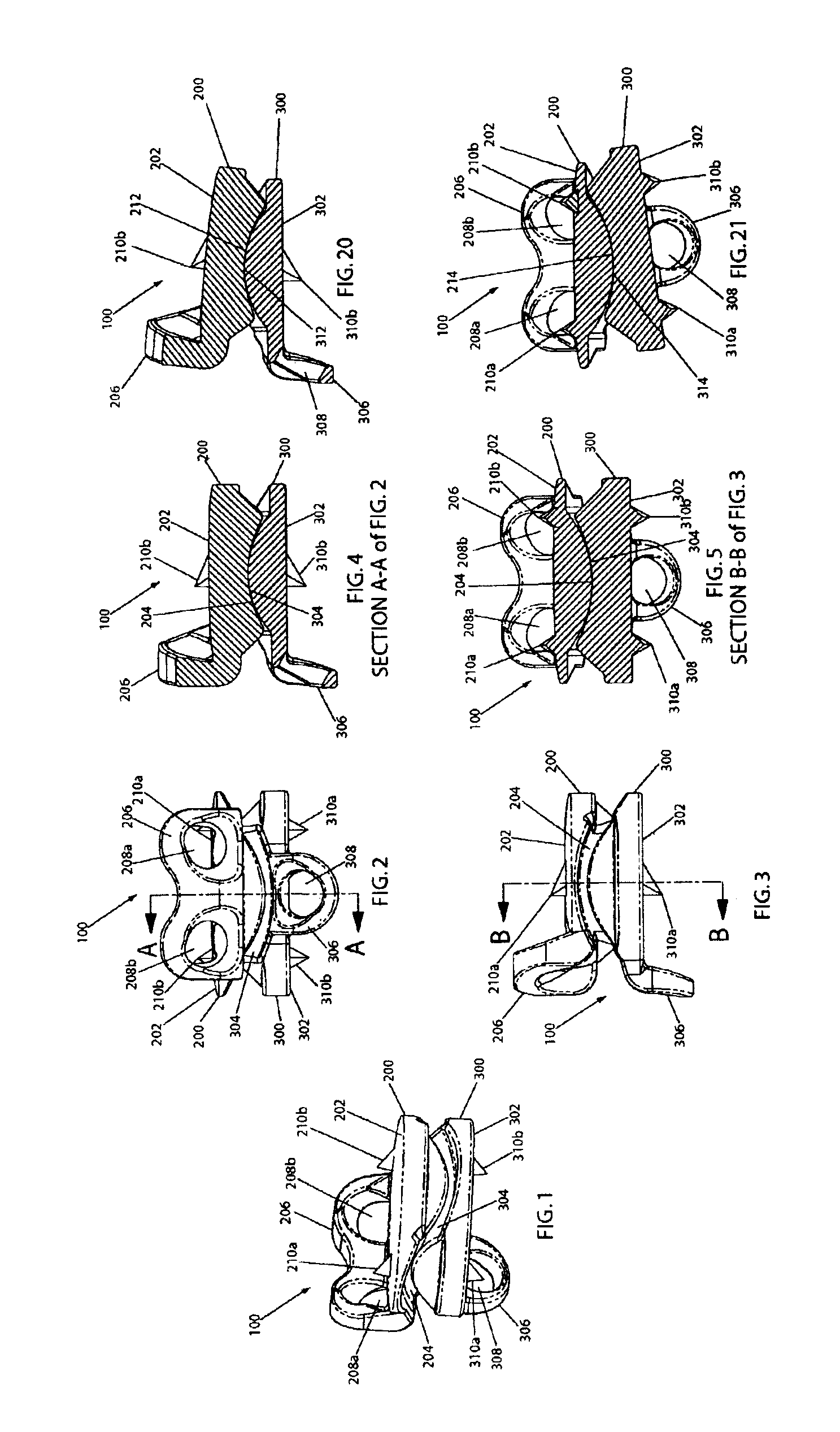Cervical disc replacement
a cervical disc and intervertebral disc technology, applied in the field of cervical disc replacement implants, can solve the problems of significant pain to the individual suffering from the condition, undesirable progressive fusion of a long sequence of vertebrae, etc., and achieve the effect of immediate and short-term relief from pain
- Summary
- Abstract
- Description
- Claims
- Application Information
AI Technical Summary
Benefits of technology
Problems solved by technology
Method used
Image
Examples
Embodiment Construction
[0042]For the purposes of promoting an understanding of the principles of the invention, reference will now be made to the embodiment illustrated in the drawings and specific language will be used to describe the same. It will nevertheless be understood that no limitation of the scope of the invention is thereby intended, such alterations and further modifications in the illustrated device, and such further applications of the principles of the invention as illustrated therein, being contemplated as would normally occur to one skilled in the art to which the invention relates.
[0043]Referring now to FIGS. 1-5, an artificial disc implant 100 of the present invention is shown in perspective, anterior, lateral, lateral cutaway, and posterior cutaway views, respectively. The implant 100 includes a first (e.g., upper) element 200 and a second (e.g., lower) element 300, each having an outwardly facing vertebral body contact surface 202, 302, and each having an inwardly facing articulation ...
PUM
 Login to View More
Login to View More Abstract
Description
Claims
Application Information
 Login to View More
Login to View More - R&D
- Intellectual Property
- Life Sciences
- Materials
- Tech Scout
- Unparalleled Data Quality
- Higher Quality Content
- 60% Fewer Hallucinations
Browse by: Latest US Patents, China's latest patents, Technical Efficacy Thesaurus, Application Domain, Technology Topic, Popular Technical Reports.
© 2025 PatSnap. All rights reserved.Legal|Privacy policy|Modern Slavery Act Transparency Statement|Sitemap|About US| Contact US: help@patsnap.com



